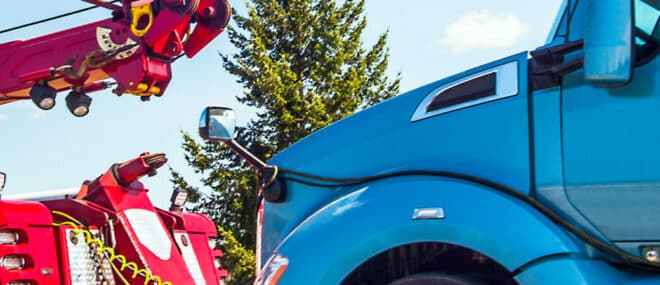The trucking industry runs on fuel, but it rests on data. Mileage, diesel, delivery times, hours – everything is tracked. It’s time to come to terms with how data is affecting trucking, and while it can be challenging for many fleet managers to harness the power of that information, benchmarking can help.
A spreadsheet of telematics tends to fall off your radar quickly, but what if that data contained clues to predicting and preventing an expensive loss? Numbers are nothing until they’re compared, considered, and applied in a productive fashion. Here are three ways better benchmarking practices can help your trucking business thrive by measuring and applying the data available to you.
1. Finding patterns, finding solutions
When you look closely at your telematics data, you may discover patterns that could be affecting your company’s overall safety and operational performance. So, how is data affecting trucking safety (or how can it)? Take this example:
If you examine your fleet’s hard-braking frequency and locations, comparing related data to your loss history, you may notice a large loss close to an area with above-average hard brake notifications. A closer look using the street view feature on Google Maps could reveal a very blind corner in the problem area, and the drivers and operation teams may confirm that this is the most commonly used route into a customer’s site.
Once you spot this pattern of poor visibility, frequent use, and significant hard braking, you could conclude that the area is high-risk for your truck drivers. What then?
While there may be no good way to avoid the route, you could alert all the drivers to be more aware when heading into the area. Closer caution could save you the time, effort, and worry that comes with reporting a collision. You can use this exercise to review other areas that appear to have a higher frequency of alerts, too.
2. Linking data brings powerful insights
It’s not very helpful for a fleet manager to know they have one crash per 12 trucks; they need to know which of those trucks is going to be next. Your data will show you the reality of your current business operations, but it can also help you predict where and when problems could arise in the future.
How is data affecting trucking concerns that demand problem solving? Take, for instance, a data set on alerts. Working with the safety coordinator to retrieve the data on which trucks were involved in alerts, what the alerts were, and where they were happening can uncover specific information about the likelihood of collision.
You may begin to notice patterns relating to the time of day and certain drivers. After comparing that data to the company’s loss history and near-miss log, you can narrow down a shortlist of drivers with multiple alerts, losses, or near misses. Do the drivers work out of one specific terminal? Perhaps they all have the same dispatcher. Upon further investigation, you might find that load planning is too tight.
Linking all of this data can quickly improve your company’s operations; make a few smart changes, and you could very well see the number of alerts drop steadily over the following weeks and months.
It’s not very helpful for a fleet manager to know they have one crash per 12 trucks; they need to know which of those trucks is going to be next.
3. Mobilizing data can save you time and money
How is data affecting trucking organizations – and what they’re able to accomplish? Well, most companies have at least one employee who loves digging through numbers to find answers. Locate and engage that person: with some time and the right tools, you might be surprised at what you can accomplish with their help (and without having to hire consulting support).
Your numbers guru will need to work out the average number of alerts by unit, driver, and mileage to establish average baselines. The next step is to look for rates above the average, and then consider the who, what, where, when, and why of those higher rates. Once you find the answers you’re looking for, engage your drivers, the safety department, and operations staff to arrive at the best solution.
Keep in mind that your review may not return conclusive results, but this isn’t an all-or-nothing effort. If crunching the numbers highlights even one pattern, that knowledge could lead to one less incident, and that one less incident could represent considerable savings in terms of direct and indirect costs.
Benchmarking can help protect your bottom line
You may never know for sure whether or not you’ve prevented a loss, but if the process was well-documented, the results were tracked, and the minimum response was deployed, you’ll be able to answer confidently when the loss control representative visits and asks, “Do you benchmark?” Your positive reply could be worth a lot in an insurance review, compliance review, or even in court.
While you reassess your benchmarking practices, you may want to consider if you could use some professional risk management support for your business needs and goals. Working with experts who know your industry, and the evolving risks carriers are facing, can help you better protect the future of your fleet.




